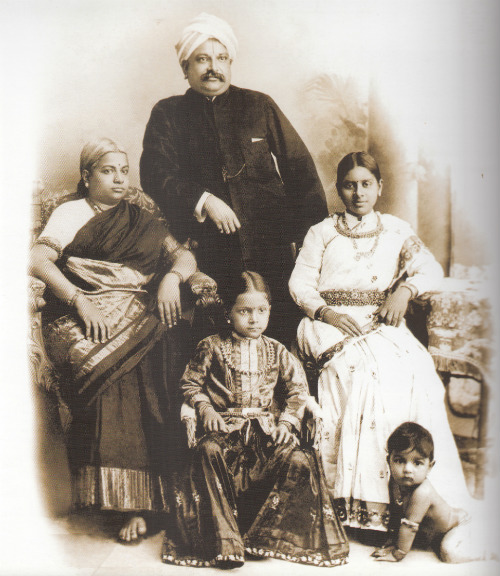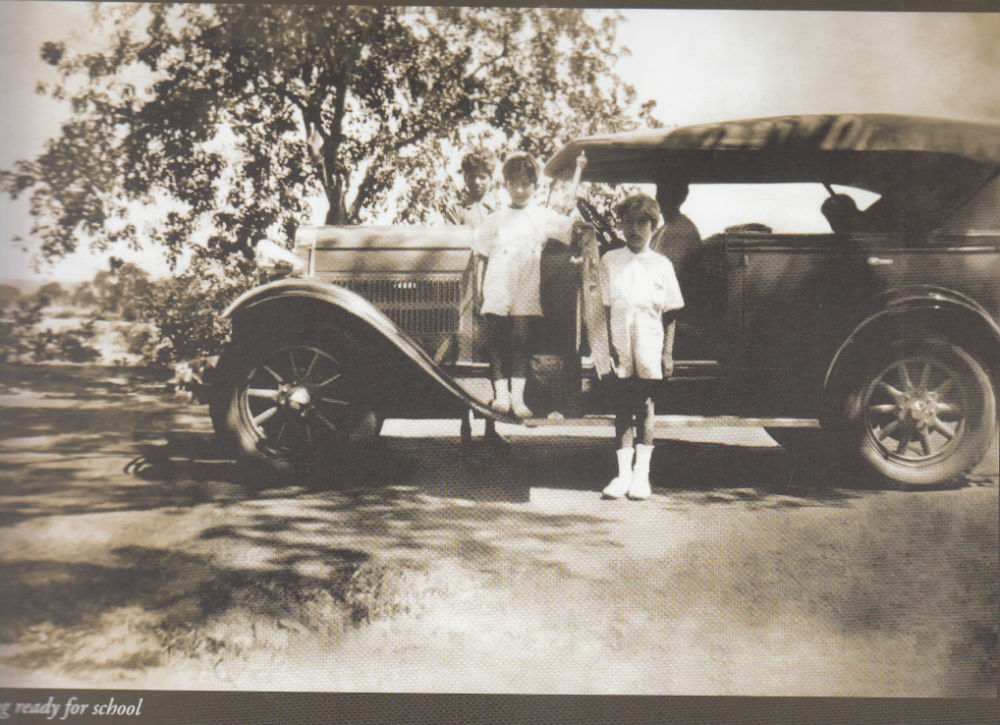Registered with the Registrar of Newspapers for India under R.N.I 53640/91
Vol. XXVII No. 7, July 16-31, 2017
Nostalgia as History – 4
by Janaki Venkataraman
From Dewanic heights to tragic collapse

Standing: Nemmali Pattabhirama Rao. Seated (left to right): his wife Kanakamma, daughter Padmasini, his niece Rukmini Lakshmipathy and baby Krishamurthy – 1905.
The last book in this selection is also the best produced. It is A Dewan’s Diary, the biography of Nemmali Pattabhirama Rao, civil servant, Dewan at the court of the Raja of Cochin, and Madras entrepreneur.
Pattabhirama Rao kept a meticulous journal. His daughter writes, “the little red book that my father carried with him to every place he moved for his transfers… had a small lock and a miniature key which was carefully guarded.” Although while he was alive the journal was kept private, it was also addressed to ‘My dear children…’ and meant to be read by them after his death. It is full of detail regarding his life and times, but much historical research has obviously been done by Pattabhirama Rao’s descendants to flesh out the history of his family.
In the combined Madras Presidency, there were many individuals from Andhra who contributed to the development of Madras, either through government service or through private business. Pattabhirama Rao did both. Born in 1862 in a Golconda Vyapari community (it was a Vaishnavite Brahmin community of traders – vyaparis – in diamonds from the Golconda mines), Pattabhirama did his Bachelor’s degree and joined the Revenue Department. From 1902 to 1907 he was Dewan to the Raja of Cochin, where he is said to have excelled in effecting the financial turn-around of the kingdom. He retired in 1907 due to ill-health and returned to Madras where he started life again as an entrepreneur. He became a contractor supplying bricks for several governmental buildings in Madras that were being built by T. Namperumal Chetty, the master builder of the time. The bricks made at his kiln were used to build the National Art Gallery and Ripon Building. As his brick kilns were in Aminjikarai, he built a house for himself close to them called Sree Ram Bagh. The grounds of the house extended from the old level crossing near Loyola College upto Poonamallee High Road. The present day Nelson Manickam Road which connects these two was his private driveway!
Pattabhirama Rao later closed his kilns and entered the business of car dealership. Motor cars were new to Madras.

Getting ready for school.
The first motor car had made its appearance in the city in 1901. Namperumal Chetty was the first Indian to own a car in the city. Later, the business of car distribution sprouted in the city. The Madras Motor Company that Pattabhirama Rao acquired had originally been a cycle import company and had its offices in Broadway which, even today, continues to be the cycle hub of Madras. It was the principal distributor for Hercules cycles. When it went into motor trading, had set up office in the Kardyl Building, now known as the Bharat Insurance Building. It later moved to Madurai, but before that the owners sold the company to Pattabhirama Rao. It was said to be a sinking company and there were not many potential buyers. But Rao roped in other family members and made his two sons, Krishnamurthy and Ramamurthy, the directors of the Company. The Company then took up the dealership for Citroen cars in South India.
Things went well until 1929 when the Great Depression and foreign exchange fluctuations led to the collapse of the Company. The Company was also unable to collect its outstanding from members of royal families who had bought cars on credit and found themselves unable to pay up. Debt mounted and the Company went into liquidation. Sree Ram Bagh, the family home, along with the assets of the entire extended family was attached. The receivers allowed Rao to stay on in his house during his lifetime. He lived there till his death in 1937. The house was later converted into an industrial estate and this too has now given way to the Ampa Skywalk building.
Rao died a broken man because of his financial losses. In the pages of his journal, he writes to his children detailing whatever assets he still had left to leave them and how they should carefully invest and multiply that money. Rao also had a large house in Madanapalle in Andhra where many of the Nemmali family lived and where he himself chose to live for many years. This house has now been turned into a travellers’ bungalow.
Pattabhirama Rao’s journal prominently displays the letter that Raja Rama Verma, the king of Cochin wrote to him on the eve of Rao’s departure from his service. It is a touching letter full of appreciation for the many measures that Rao took to turn around the financial situation Cochin was in then. “In loyalty and faithfulness to me and my people, you are second to none,” the Raja wrote. “I am sure that several of your good intentions will be remembered by the people of Cochin with gratitude and thankfulness for centuries to come.” The Raja and Rao continued to correspond for many years later out of friendship on the former’s part and respect on the latter’s.
The children and grandchildren of Nemmali Pattabhirama Rao have brought out this biography out of affection and respect for their ancestor. For the ordinary reader, this book offers something valuable, a peek into a world long gone, high values that have long since been eroded, and a closeness of familial relationships that seem to be fast vanishing.

